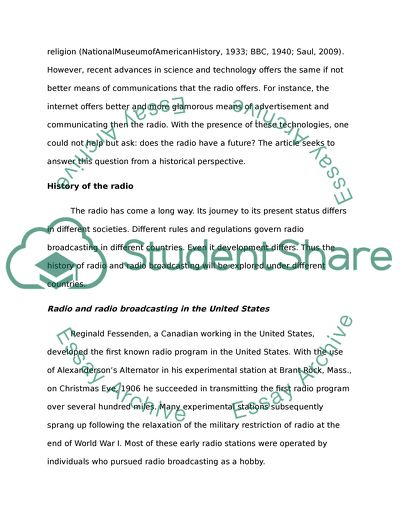Cite this document
(“Does radio have a future A historical perspective Essay”, n.d.)
Retrieved from https://studentshare.org/environmental-studies/1421402-does-radio-have-a-future-a-historical-perspective
Retrieved from https://studentshare.org/environmental-studies/1421402-does-radio-have-a-future-a-historical-perspective
(Does Radio Have a Future A Historical Perspective Essay)
https://studentshare.org/environmental-studies/1421402-does-radio-have-a-future-a-historical-perspective.
https://studentshare.org/environmental-studies/1421402-does-radio-have-a-future-a-historical-perspective.
“Does Radio Have a Future A Historical Perspective Essay”, n.d. https://studentshare.org/environmental-studies/1421402-does-radio-have-a-future-a-historical-perspective.


